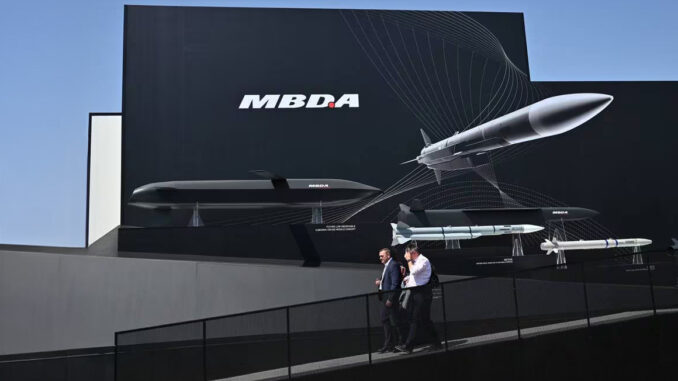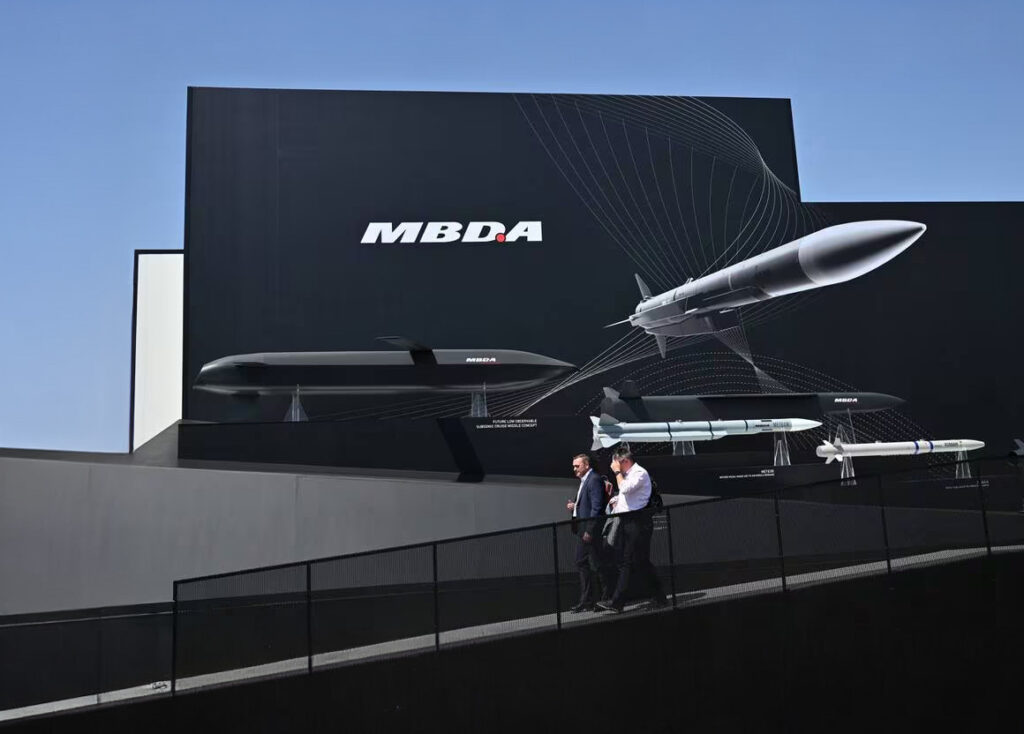
MBDA is positioning itself to develop a European long-range missile, following the ELSA initiative. Analysis of the strategic and industrial implications.
The European Long-Range Strike Approach (ELSA) initiative, led by France with Germany, Poland and Italy, aims to develop a European long-range strike missile. MBDA, Europe’s leading missile manufacturer, is presenting its Land Cruise Missile (LCM) as a sovereign solution. With a range of more than 1,000 kilometres, this missile would strengthen Europe’s deterrent capability in the face of growing threats. The implications include increased industrial cooperation and a strengthening of Europe’s strategic autonomy.
The development of long-range missiles in Europe has become a strategic priority in the light of recent conflicts and growing international tensions. Missile manufacturer MBDA is positioning itself as the potential leader for this new generation of missiles, thanks to the European Long-Range Strike Approach (ELSA) initiative. This article analyses in detail the technical, economic and strategic aspects of this development and its implications for European defence.
Background to the ELSA initiative
The ELSA initiative, launched by France and supported by Germany, Poland and Italy, aims to strengthen Europe’s long-range strike capability. This initiative responds to the need to strengthen European deterrence in the face of potential threats. The missile envisaged would have a range of more than 1,000 kilometres, providing a precise in-depth strike capability.
Case in point: the 1,000-kilometre range would cover a distance equivalent to that between Paris and Rome, demonstrating the strategic importance of this capability.
Technical advantages of MBDA’s Land Cruise Missile
MBDA presented its Land Cruise Missile (LCM) as a solution adapted to the needs of the ELSA initiative. This missile, derived from the naval cruise missile used by French frigates and submarines, offers a range of more than 1,000 kilometres, enhanced stealth and terrain-following capabilities. These features make it a crucial tool for deep strikes.
Key figures: The LCM has a range of over 1,000 km and can be launched from land-based platforms, increasing its operational flexibility.

Economic implications for the European defence industry
The development of a European long-range strike missile has significant economic benefits. MBDA, as Europe’s largest missile manufacturer with a turnover of €4.5 billion in 2023 and an order book of €28 billion, is well positioned to lead this project.
Examples in figures: MBDA already produces missiles such as the Scalp/Storm Shadow and the Taurus, which have shorter ranges but demonstrate the company’s expertise in cruise missiles.
Strategic consequences of the ELSA initiative
The development of long-range missiles strengthens Europe’s strategic autonomy. By reducing dependence on non-European technologies, the EU can better respond to security challenges without depending on external partners. It also strengthens Europe’s position in international alliances, particularly within NATO.
Geopolitical consequences: A more autonomous Europe in terms of defence can play a more active role on the world stage, influencing power dynamics and international relations.
The role of industrial cooperation
The success of the ELSA initiative depends on effective industrial cooperation. MBDA, as a pan-European joint venture between Airbus, BAE Systems and Leonardo, is a model of successful industrial cooperation. This collaboration makes it possible to pool resources and skills to develop advanced defence systems.
Examples of cooperation: Partnerships between MBDA’s national divisions in France, Germany, the UK and Italy illustrate how effective collaboration can strengthen European defence capability.
Challenges and prospects
Despite the potential benefits, the development of a European long-range strike missile presents challenges. Coordination between the participating countries, development costs and technical constraints are all obstacles to be overcome. However, the strategic and economic potential of this project justifies these efforts.
Challenges to be overcome : Coordination of national defence policies, budget management and synchronisation of technology development efforts are crucial to the success of the ELSA initiative.
The European Long-Range Strike Approach initiative and MBDA’s role in it illustrate Europe’s efforts to strengthen its strategic autonomy and deterrence capability. By developing a long-range strike missile, Europe is positioning itself to meet current and future security challenges. This will require increased industrial and political cooperation, but the potential benefits in terms of security and sovereignty justify these efforts.
War Wings Daily is an independant magazine.